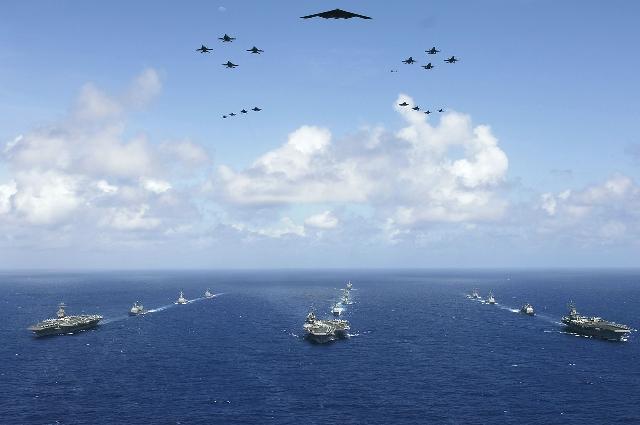The real costs of the defense budget
The U.S. is quietly ramping up defense spending to nearly $1 trillion, despite claims to the contrary.
The Department of Defense (DOD) presented their 2026 budget proposal on July 3, requesting a 2% increase from last year’s allocation. Republican lawmakers are raising alarms, arguing that given the Federal Reserve’s projection of 3% inflation for 2025, the increase represents a reduction in real terms. Others also assert that the defense-spending-to-GDP ratio is dangerously low and should be increased.
On their own, the numbers look damning, but with the recent passage of President Trump’s “One Big Beautiful Bill” (OBBB) and in light of nuanced indicators beyond the GDP, U.S. defense spending is doing just fine. Certainly, the national budget must reflect increased tensions abroad, but lawmakers are wrong in suggesting that defense spending is not already a top priority.
The Numbers Don't Add Up
Last year’s DOD base budget started at $831 billion. This year, the base request comes to $848.3 billion. However, the proper evaluation should also include the $150 billion which the OBBB allocates for the Defense Department. These funds were embedded in a massive omnibus bill that mixed defense spending with tax, health care, and immigration provisions. This is a common strategy among policymakers: Bundling disparate items together makes it politically costly for legislators to oppose a bill, since doing so would also eliminate beneficial provisions.
Splitting defense spending into two vehicles -- the OBBB and the traditional defense budget -- allows the Trump Administration to secure extra funds quickly before the base defense budget is approved, while maintaining an appearance of fiscal restraint.
Factoring in the provisions in the OBBB, the total defense appropriations will increase to almost $1 trillion ($998.3 billion) -- a staggering 20% increase over last year’s budget. National defense is an obvious priority for this administration, notwithstanding the DOD’s modest budget request for 2026.
The GDP Misconception
There’s no doubt that defense spending relative to GDP is low by historical standards. During the Cold War, defense spending hovered between 9% and 5% relative to GDP, and the average since 1965 is around 5.3%. In 2026, defense spending relative to GDP will be 2.5% - 3% if you include the OBBB’s provisions.
But GDP alone is a red herring. Those questioning current spending levels should consider not just the “scale” of military expenditure relative to GDP, but also the “scope” of that spending. This distinction matters because you can have relatively modest spending as a percentage of GDP while simultaneously expanding government activities far beyond traditional boundaries.
Consider the Cold War example. Even as defense spending declined from roughly 9% of GDP in the 1950s to about 6% in the 1980s, the government’s scope expanded dramatically. The National Security Act of 1947 created the National Security Council and the CIA, establishing entirely new bureaucracies dedicated to intelligence gathering and covert operations that simply didn't exist before. These agencies represented a fundamental expansion of government scope, regardless of the declining GDP relationship.
The Defense Department has grown even more since the Cold War ended in 1989. The Pentagon has increased its operations from about 40 countries in the 1990s to roughly 80 today. Similarly, U.S. Special Operations forces were deployed in approximately 60 countries in 2009, but by 2017 that number had expanded to 150 countries. If history is any indication, the American military will likely continue expanding its scope even with a comparatively low GDP percentage in 2026.
The Bottom Line
Concerns that the US is underspending on national defense are unfounded. For the first time, the DOD will have at its disposal almost $1 trillion for the upcoming fiscal year -- a record high. While rising threats may justify this increase, no defense spending should go unaccounted for. As James Madison warned, unchecked military expenditure threatens the very freedoms it claims to protect.
Agustin Forzani is an MA in economics from George Mason University. He has published in Inside Sources, Discourse Magazine, RealClearMarkets, and Washington Examiner. @agustinforzani

Image: DoD